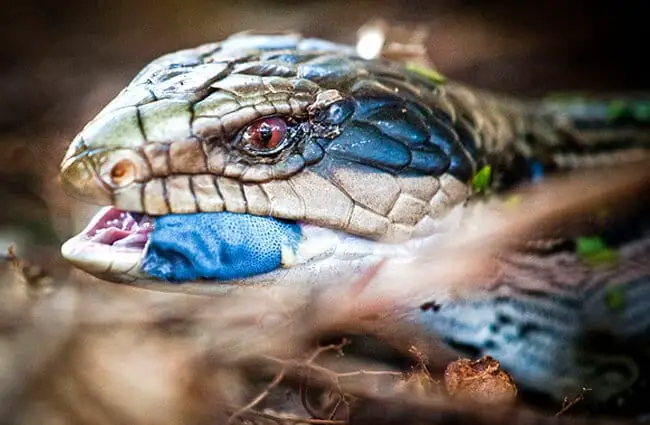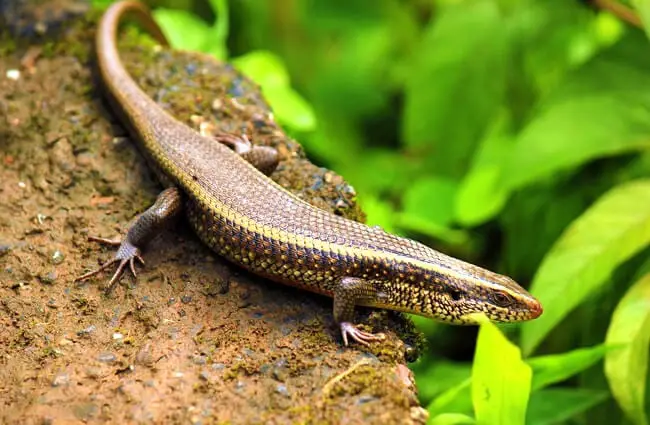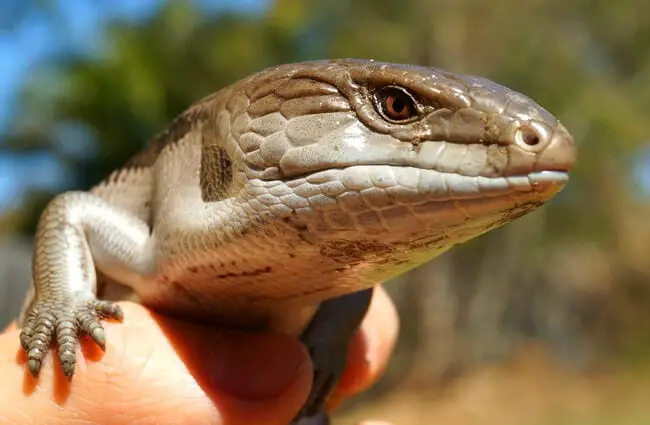An Introduction to the Blue Tongue Skink
The Blue Tongue Skink, a captivating reptile found across Australia and New Guinea, is renowned for its striking appearance and surprisingly docile temperament. These lizards are not just visually stunning; they play a vital role in their ecosystems and have a fascinating history. From their unique defense mechanism to their surprisingly complex social behaviors, the Blue Tongue Skink offers a wealth of natural history to explore. This guide delves into all facets of this remarkable creature, offering insight for students, animal enthusiasts, and anyone curious about the natural world.

Understanding the Blue Tongue Skink
Physical Characteristics
Blue Tongue Skinks are readily identifiable by the bright blue tongue that gives them their name. This vibrant display is not a sign of health, but a startling defense mechanism used to deter predators. Typically, they range from 30 to 50 centimetres in length, with some individuals larger. They have short, sturdy legs, large heads, and smooth scales. Colouration varies with species and location, ranging from shades of grey and brown to banded patterns.
Species Diversity
There are several species of Blue Tongue Skink, each with slight variations in appearance and habitat preference. The most well known species include the Eastern Blue Tongue Skink Tiliqua scincoides scincoides, the Northern Blue Tongue Skink Tiliqua scincoides intermedia, and the Western Blue Tongue Skink Tiliqua scincoides occidentalis. Each species exhibits adaptations suited to its specific environment, contributing to the overall resilience of the group.
Habitat and Distribution
Blue Tongue Skinks inhabit a diverse range of environments, including forests, woodlands, grasslands, and even urban areas. They are found throughout much of Australia and parts of New Guinea. These adaptable reptiles thrive in areas with ample ground cover, providing both shelter and foraging opportunities. They prefer warmer climates but can tolerate cooler temperatures by burrowing or seeking refuge under rocks or logs.

Diet and Foraging Behavior
Blue Tongue Skinks are omnivores, with a varied diet that includes insects, snails, slugs, fruits, flowers, and occasionally small vertebrates. They are opportunistic feeders, meaning they will consume whatever is readily available. Their strong jaws and blunt teeth are well suited for crushing hard‑shelled invertebrates. They are known for their methodical foraging style, often slowly scanning the ground for potential food items.
Evolutionary Adaptations for Diet
The skink’s digestive system is remarkably efficient at extracting nutrients from a wide range of food sources. This adaptability has been crucial to their survival in diverse environments. The ability to process both plant and animal matter allows them to thrive even when specific food items are scarce.
Reproduction and Life Cycle
Blue Tongue Skinks are viviparous, giving birth to live young rather than laying eggs. The gestation period is typically around three months, with females giving birth to litters of five to fifteen skinks. The young are miniature versions of their parents and are immediately independent, though they are vulnerable to predation.
Mating Rituals
Male Blue Tongue Skinks engage in courtship displays to attract females. These displays can involve head bobbing, tail waving, and even gentle biting. Successful mating results in the development of embryos within the female’s oviducts, where they receive nourishment until birth.
Blue Tongue Skinks in the Ecosystem
These skinks play an important role in their ecosystems as both predators and prey. They help control populations of insects and snails, while also serving as a food source for larger animals such as birds of prey and snakes. Their foraging activities also contribute to seed dispersal and soil aeration.

Interactions with Other Animals
Blue Tongue Skinks often share their habitat with other reptiles, mammals, and birds. They generally exhibit peaceful coexistence, though competition for food and resources can occur. They have also been observed basking in the sun alongside other reptile species.
Human Interactions and Conservation
Blue Tongue Skinks are popular pets due to their docile temperament and striking appearance. However, it is crucial to obtain these animals from reputable breeders and provide them with appropriate care. Habitat loss and predation by introduced species pose the greatest threats to wild populations. Conservation efforts focus on protecting and restoring their natural habitats.
Responsible Pet Ownership
If considering a Blue Tongue Skink as a pet, it is essential to research their specific needs and provide a suitable enclosure with appropriate temperature, humidity, and lighting. They require a varied diet and regular handling to maintain their health and well‑being. It is also vital to ensure that keeping them as pets does not contribute to the decline of wild populations.

Finding Blue Tongue Skinks in the Wild
To observe Blue Tongue Skinks in their natural habitat, focus on areas with ample ground cover, such as forests, woodlands, and gardens. They are most active during the warmer months, often basking in the sun or foraging for food. Approach slowly and quietly to avoid startling them. Observe from a distance and respect their space.
A Hiker’s Guide: Encountering a Blue Tongue Skink
If you encounter a Blue Tongue Skink while hiking, remain calm and avoid approaching it too closely. They are generally not aggressive and will likely retreat if given space. Do not attempt to handle or disturb the animal. Admire it from a safe distance and continue your hike.
Caring for Blue Tongue Skinks in Captivity: A Zookeeper’s Guide
Providing optimal care for Blue Tongue Skinks in captivity requires a commitment to their specific needs. Their enclosure should be spacious, secure, and equipped with appropriate temperature gradients, humidity levels, and UVB lighting. A varied diet consisting of insects, fruits, vegetables, and commercially available reptile food is essential. Regular health checks and veterinary care are also crucial. Enrichment activities, such as providing digging opportunities and novel food items, can help stimulate their natural behaviours and prevent boredom.

Interesting Facts
- Blue Tongue Skinks can live for over 20 years in captivity.
- They are capable of delivering a painful bite, but are not venomous.
- Their blue tongue is used to startle predators.
- They are skilled diggers, creating burrows for shelter and nesting.
- Blue Tongue Skinks can enter a state of brumation during colder months, reducing their activity and metabolism.
Conclusion
The Blue Tongue Skink is a remarkable reptile with a unique combination of physical characteristics, behavioural adaptations, and ecological importance. By understanding their needs and appreciating their role in the natural world, we can help ensure their continued survival for generations to come. Whether observing them in the wild, caring for them in captivity, or simply learning about their fascinating lives, the Blue Tongue Skink offers a captivating glimpse into the wonders of the reptile kingdom.

![Red Angus Closeup of a beautiful Red Angus cowPhoto by: U.S. Department of Agriculture [pubic domain]https://creativecommons.org/licenses/by/2.0/](https://animals.net/wp-content/uploads/2020/03/Red-Angus-4-238x178.jpg)




![Red Angus Closeup of a beautiful Red Angus cowPhoto by: U.S. Department of Agriculture [pubic domain]https://creativecommons.org/licenses/by/2.0/](https://animals.net/wp-content/uploads/2020/03/Red-Angus-4-100x75.jpg)

